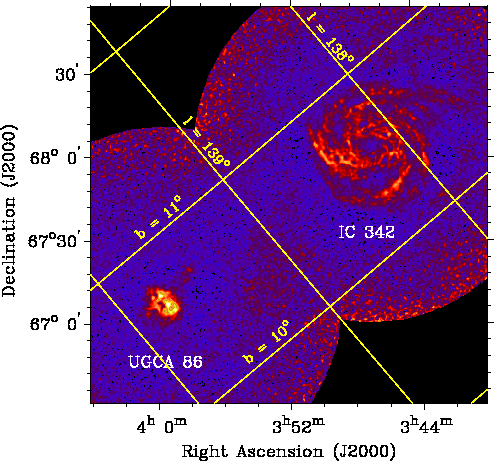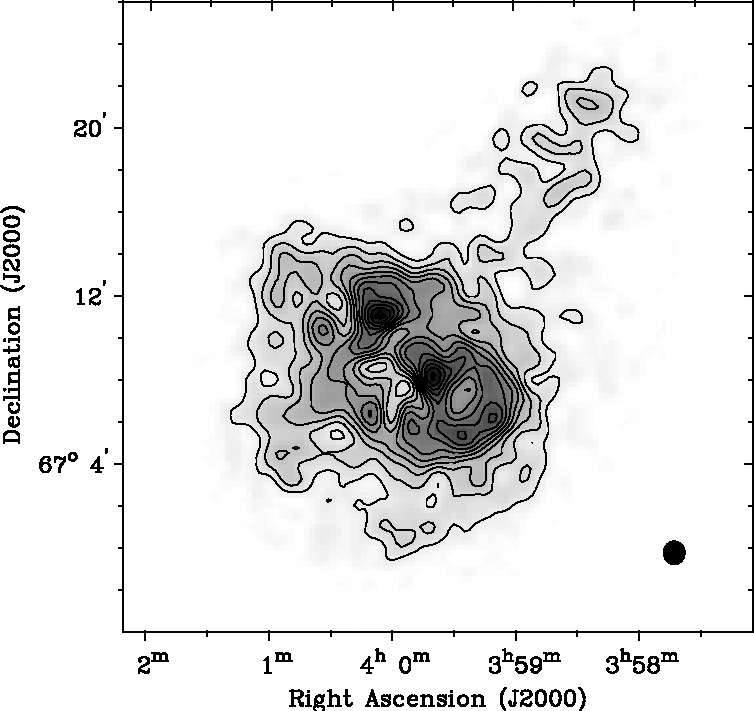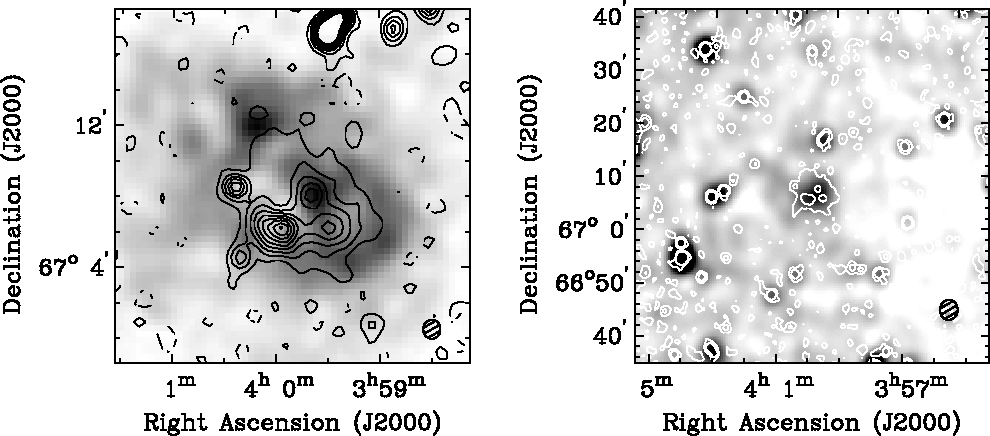

|
This HI image is a two-field mosaic in the HI 21-cm line of the Sc spiral IC 342 and its companion UGCA 86 made with the DRAO interferometer. UGCA 86 is a Magellanic type irregular galaxy at a distance of 2.6 Mpc. In a paper accepted for publication in the Astrophysical Journal, we report the peculiar HI kinematics of UGCA 86. The yellow coordinate frame indicates Galactic longitude (l) and latitude (b). Faint extended emission between UGCA 86 and IC 342 has velocities and line widths characteristic of foreground Galactic HI. Reference: Stil, Gray & Harnett (2004). |

|
The HI column density map of UGCA 86 shows an elongated spur of HI emission extending to the northwest, the approximate direction of IC 342. In the paper we show that this spur partially overlaps with the HI disk on the sky. By coincidence, part of the spur is seen along a special line of sight: through the center of UGCA 86. In this line of sight, the velocity difference between the spur and the disk measures directly the velocity component of the spur gas in the direction of the center of mass of UGCA 86. The velocity difference is approximately 40 km/s, or one third of the rotation velocity at the outer edge of the HI disk. This indicates that the orbit of gas in the spur is significantly non-circular. We find that the spur gas is most likely in a near-polar orbit. It is not easy to explain the spur as a tidal feature because of its highly inclined orbit and the lack of evidence of a warp in the HI disk. Detailed dynamical modelling is required to confirm this. Reference: Stil, Gray & Harnett (2004). |

|
| Left: Radio continuum map of UGCA 86 shown in contours over a gray scale image of HI column density. The innermost three sources correspond with HII region complexes. The two point sources on the east (left) are likely background sources. Note the distinct extended component. Right: 21-cm continuum (white contours) on the 408 MHz image (gray scales). The sensitivity of the 408 MHz image is limited by confusion with faint background sources. The over-all spectral index of UGCA 86 between 408 MHz and 1.4 GHz is -0.34, similar to that of the dwarf galaxy NGC 1569, which is embedded in a large halo of synchrotron emission. Reference: Stil, Gray & Harnett (2004). |